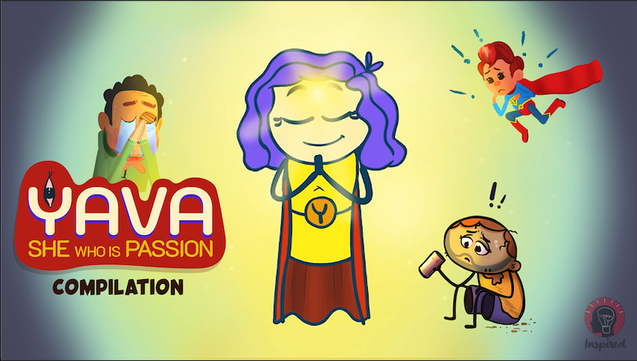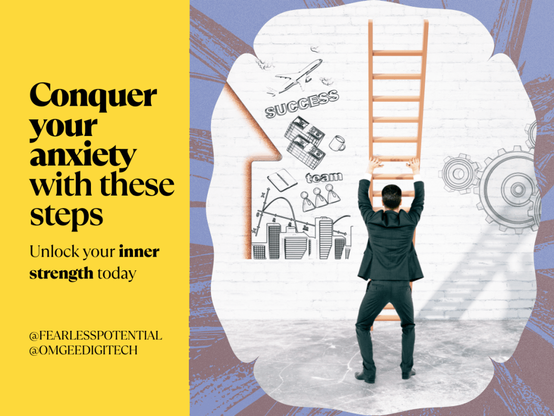Global Gutsy: 4 Proven Steps to Fearless Living in 2025
Fear is a universal human experience that transcends cultures, borders, and backgrounds. Whether you’re an entrepreneur in Silicon Valley, a student in Mumbai, or a farmer in rural Kenya, fear can be a powerful force that holds you back from reaching your full potential. In today’s interconnected world, overcoming fear is not just a personal challenge but a global imperative for progress and innovation.
According to a 2025 study by the World Health Organization, approximately 15% of the global population experiences debilitating fear or anxiety that significantly impacts their daily lives. This translates to over 1 billion people worldwide who struggle with fear-related issues. However, the good news is that fear can be managed and overcome with the right strategies and mindset.
In this comprehensive guide, we’ll explore four simple yet powerful steps to conquer your fears, drawing insights from both traditional wisdom and cutting-edge digital innovations. By the end of this article, you’ll have a toolkit of strategies to face your fears head-on and unlock your true potential.
https://youtu.be/L5rb1lZh1dE
Step 1: Identify and Understand Your Fears
The first step in overcoming fear is to clearly identify what you’re afraid of and understand the root causes of those fears. This process of self-reflection and analysis is crucial for developing effective coping strategies.
Traditional Approach: Journaling and Self-Reflection
One time-tested method for identifying fears is through journaling and self-reflection. Take time each day to write down your thoughts, feelings, and experiences related to fear. Ask yourself probing questions like:
- What situations make me feel anxious or afraid?
- When did I first start feeling this fear?
- How does this fear impact my daily life and decisions?
Digital Innovation: AI-Powered Emotion Tracking Apps
In the digital age, we can leverage technology to gain deeper insights into our emotional patterns. AI-powered emotion tracking apps like Moodfit and Daylio use machine learning algorithms to analyze your mood entries, identify patterns, and provide personalized insights into your fear triggers.
Real-Life Situation: Oprah Winfrey’s Fear Journal
Media mogul Oprah Winfrey has been open about her use of journaling to overcome fears and challenges throughout her career. In her book “What I Know for Sure,” Winfrey describes how keeping a daily gratitude journal helped her confront and overcome her fears of failure and inadequacy. By combining traditional journaling with digital emotion tracking, you can gain a comprehensive understanding of your fears and their impact on your life.
Step 2: Challenge Your Fear-Based Thoughts
Once you’ve identified your fears, the next step is to challenge the thoughts and beliefs that fuel them. Often, our fears are based on irrational or exaggerated perceptions of reality.
Traditional Approach: Cognitive Behavioral Therapy (CBT) Techniques
Cognitive Behavioral Therapy is a well-established psychological approach that helps individuals identify and change negative thought patterns. Some key CBT techniques for challenging fear-based thoughts include:
- Evidence Examination: Look for factual evidence that supports or contradicts your fearful thoughts.
- Alternative Explanations: Consider other possible interpretations of a situation that don’t involve your worst fears.
- Decatastrophizing: Imagine the worst-case scenario and then realistically assess its likelihood and your ability to cope.
Digital Innovation: Virtual Reality Exposure Therapy
Virtual Reality (VR) technology has revolutionized exposure therapy, allowing individuals to confront their fears in a safe, controlled environment. VR platforms like Psious and Limbix offer immersive experiences that gradually expose users to fear-inducing situations, helping them build confidence and resilience4.
Lived Experience: Will Smith’s Skydiving Challenge
Actor Will Smith famously conquered his fear of heights by skydiving on his 50th birthday. In interviews, Smith described how he used mental rehearsal techniques (a form of CBT) to prepare for the jump, visualizing a successful outcome and challenging his fear-based thoughts. By combining traditional CBT techniques with cutting-edge VR technology, you can create a powerful system for challenging and overcoming your fears.
Step 3: Gradually Face Your Fears
Exposure is a key component of overcoming fear. By gradually facing the things you’re afraid of, you can build confidence and desensitize yourself to the fear response.
https://youtu.be/cgMvFRUAd0s?si=vsSlIx3VfVVBfNT1
Traditional Approach: Systematic Desensitization
Systematic desensitization is a therapeutic technique that involves creating a fear hierarchy and gradually exposing yourself to increasingly challenging situations. For example, if you’re afraid of public speaking, your hierarchy might look like this:
- Speaking in front of a mirror
- Giving a short presentation to a close friend
- Speaking up in a small group meeting
- Presenting to a larger group of colleagues
- Delivering a speech at a public event
Digital Innovation: Gamification and Mobile Apps
Mobile apps like Habitica and SuperBetter turn the process of facing fears into an engaging game-like experience. These apps allow you to set goals, track progress, and earn rewards as you work through your fear hierarchy.
Real-Life Situation: Richard Branson’s Business Challenges
Virgin Group founder Richard Branson is known for his adventurous spirit and willingness to take risks. In his autobiography “Losing My Virginity,” Branson describes how he systematically faced his business fears by starting small with Virgin Records and gradually taking on bigger challenges like Virgin Atlantic Airways.
By combining traditional systematic desensitization with gamified mobile apps, you can create a structured and motivating approach to facing your fears.
Step 4: Build Resilience and Support Systems
Overcoming fear is not a solo journey. Building resilience and creating strong support systems are crucial for long-term success in managing fear.
Traditional Approach: Mindfulness and Meditation
Mindfulness and meditation practices have been used for centuries to cultivate emotional resilience and reduce anxiety. Regular mindfulness practice can help you stay grounded in the present moment and respond to fear with greater calm and clarity.
Digital Innovation: Online Support Communities and Teletherapy
The internet has made it easier than ever to connect with others who share similar fears and challenges. Online platforms like 7 Cups and BetterHelp offer access to supportive communities and professional therapists from the comfort of your home.
Hands-On Case: Arianna Huffington’s Thrive Global
Media entrepreneur Arianna Huffington founded Thrive Global after experiencing burnout and anxiety in her own life. The platform combines traditional wellness practices with cutting-edge technology to help individuals build resilience and manage stress.
By integrating mindfulness practices with digital support tools, you can create a comprehensive resilience-building strategy.
The Power of Community in Overcoming Fear
Throughout this journey of overcoming fear, it’s important to remember the vital role that local communities play in supporting individual growth and resilience. Small businesses, community organizations, and local support groups often provide the personal connections and tailored resources that are essential for facing fears and building confidence.
For example, a local yoga studio might offer mindfulness classes that complement your digital meditation app. A community theater group could provide a supportive environment for practicing public speaking skills. By actively engaging with and supporting these local resources, you not only benefit your own personal growth but also contribute to a stronger, more resilient community as a whole.
Share your answer in the comments! Let’s support each other on our journey to fearlessness. 💪
#FearlessPoll #OvercomingFear #CourageJourney
Conclusion: Embracing a Fearless Future
As we’ve explored in this guide, overcoming fear is a journey that combines timeless wisdom with modern innovation. By following these four simple steps and leveraging both traditional and digital tools, you can build the confidence and resilience needed to face your fears head-on.
Remember, the goal isn’t to eliminate fear entirely—it’s to develop the skills and mindset to move forward despite fear. As you embark on this journey, consider the following questions:
- How can you integrate both traditional and digital approaches in your own fear-conquering strategy?
- What role can your local community play in supporting your journey to overcome fear?
- How might conquering your personal fears contribute to positive change on a global scale?
By taking action today and embracing these strategies, you’re not just overcoming your own fears—you’re contributing to a more courageous and innovative global community. What fear will you conquer first?
READ MORE DISCOVER MORE “In the face of fear”
How fear and anxiety affect our health
and society, and what we can do about it
FREE DOWNLOAD #DigitalCourage #FearlessFuture #FearlessLiving #FearNoMore #GlobalCourage #CourageJourney #FearlessPoll #OvercomingFear






